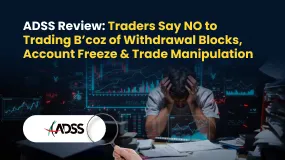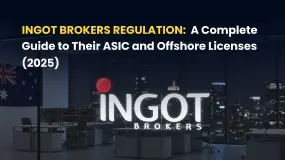简体中文
繁體中文
English
Pусский
日本語
ภาษาไทย
Tiếng Việt
Bahasa Indonesia
Español
हिन्दी
Filippiiniläinen
Français
Deutsch
Português
Türkçe
한국어
العربية
Will the Euro and US Dollar Reach Parity in 2025?
Abstract:Euro-dollar parity sparks debate again as 2025 approaches, with multiple factors shaping the exchange rate outlook.

Since its introduction in 1999, the exchange rate between the euro and the US dollar has been one of the focal points of global financial markets. In the past two decades, the euro and the dollar have only reached parity (1:1) on a few occasions. The most recent instance occurred in 2022, when Russias full-scale invasion of Ukraine triggered an energy crisis in Europe, heightening fears of a recession in the eurozone and pushing the exchange rate to the psychological key level of 1:1. Recent market volatility has reignited discussions about the potential return of euro-dollar parity. The long-term trend indicates that the euro once peaked at $1.60, but under the pressure of energy crises and increasing global economic uncertainty, the exchange rate has remained under downward pressure.

The possibility of the euro and the dollar reaching parity again in 2025 is widely discussed, with many analysts suggesting it is far from impossible. First, the eurozone‘s economic growth lags significantly behind that of the United States, setting the stage for potential exchange rate volatility. Major eurozone economies like Germany and France have faced structural challenges in recent years, including weak manufacturing sectors and insufficient consumer demand. In contrast, the United States has maintained economic resilience through strong consumer spending and corporate profits. Additionally, the eurozone’s interest rates have long been lower than those in the US. The Federal Reserves commitment to fighting inflation has kept US benchmark rates high, further widening the euro-dollar interest rate differential and drawing capital toward dollar-denominated assets.
On the geopolitical front, factors such as potential US tariffs on EU goods and political uncertainty within certain eurozone countries have undermined confidence in euro-denominated assets. As a result, from the perspectives of economic fundamentals and market expectations, the likelihood of the euro falling to parity with the dollar in 2025 is relatively high.

The future trajectory of the euro will not be dictated solely by economic growth and monetary policy; external factors will play a pivotal role in 2025. First, global geopolitical developments will directly impact exchange rates. Any international conflict or changes in trade policy could lead to sharp market sentiment swings, influencing the short-term euro-dollar exchange rate. Additionally, inflation levels and energy price volatility will be crucial variables. If energy prices rise again due to supply chain disruptions, the eurozone, which relies heavily on imported energy, could face greater economic headwinds. Furthermore, market psychology and speculative activities cannot be overlooked. Parity represents a psychologically significant level that could trigger substantial options trading or speculative activities, amplifying exchange rate volatility.
Meanwhile, shifts in the euro-dollar exchange rate will have spillover effects on regional economies. A weaker euro may enhance export competitiveness, but rising import costs could drive inflation higher, impacting consumer confidence. Thus, the euros path to 2025 remains fraught with uncertainty, shaped by a complex interplay of factors both within and beyond the eurozone.
Disclaimer:
The views in this article only represent the author's personal views, and do not constitute investment advice on this platform. This platform does not guarantee the accuracy, completeness and timeliness of the information in the article, and will not be liable for any loss caused by the use of or reliance on the information in the article.
Read more

Grand Capital Doesn’t Feel GRAND for Traders with Withdrawal Denials & Long Processing Times
The trading environment does not seem that rosy for traders at Grand Capital, a Seychelles-based forex broker. Traders’ requests for withdrawals are alleged to be in the review process for months, making them frustrated and helpless. Despite meeting the guidelines, traders find it hard to withdraw funds, as suggested by their complaints online. What’s also troubling traders are long processing times concerning Grand Capital withdrawals. In this Grand Capital review segment, we have shared some complaints for you to look at. Read on!

ADSS Review: Traders Say NO to Trading B’coz of Withdrawal Blocks, Account Freeze & Trade Issues
Does ADSS give you plenty of excuses to deny you access to withdrawals? Is your withdrawal request pending for months or years? Do you witness account freezes from the United Arab Emirates-based forex broker? Do you struggle to open and close your forex positions on the ADSS app? Does the customer support service fail to respond to your trading queries? All these issues have become a rage online. In this ADSS Broker review article, we have highlighted actual trader wordings on these issues. Keep reading!

INGOT Brokers Regulation 2025: ASIC vs Offshore License - What Traders Must Know
Explore INGOT Brokers regulation in 2025: Compare their ASIC and Seychelles FSA licenses, understand trader protection levels, and learn about potential risks in this detailed guide.

INGOT Brokers Review 2025: High Risk or Hidden Gem? Expert Analysis Reveals All
Comprehensive INGOT Brokers review exploring the broker's mixed reputation in 2025. Discover the truth about regulation, trading options, and user experiences before opening an account.
WikiFX Broker
Latest News
Mitrade Arabic Platform Targets MENA Gold Trading Boom
Israeli Arrested in Rome Over €50M Forex Scam
New FCA Consumer Alert 2025: Important Warning for All Consumers
EmiraX Markets Withdrawal Issues Exposed
2 Malaysians Arrested in $1 Million Gold Scam Impersonating Singapore Officials
Exness Broker Expands in South Africa with Cape Town Hub
Fraud Mastermind Zhimin Qian Sentenced to 11 Years for $6.6 Billion Bitcoin Ponzi Scheme
Is FXPesa Regulated? Real User Reviews & Regulation Check
Almahfaza Broker – 2025 Review: Safe or Scam?
Uniglobe Markets Review 2025: A Complete Guide to an Unregulated Broker
Currency Calculator



